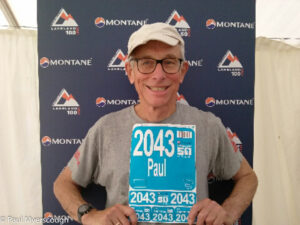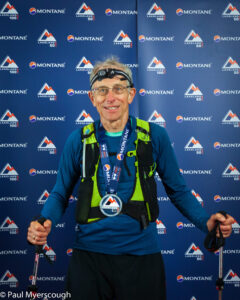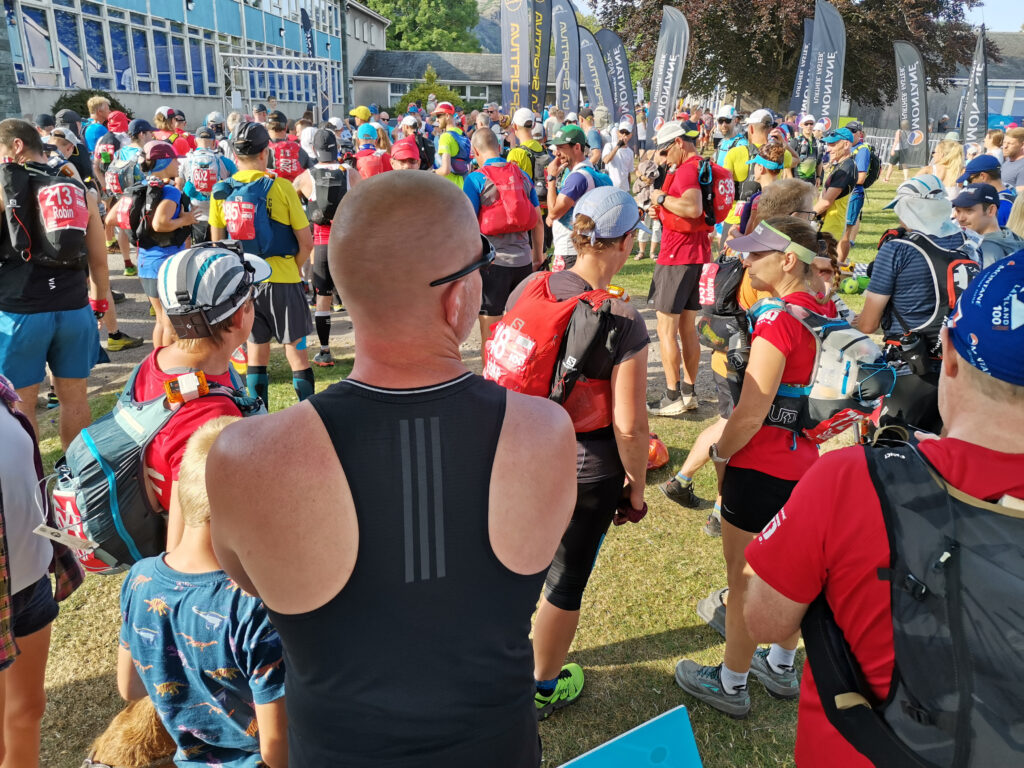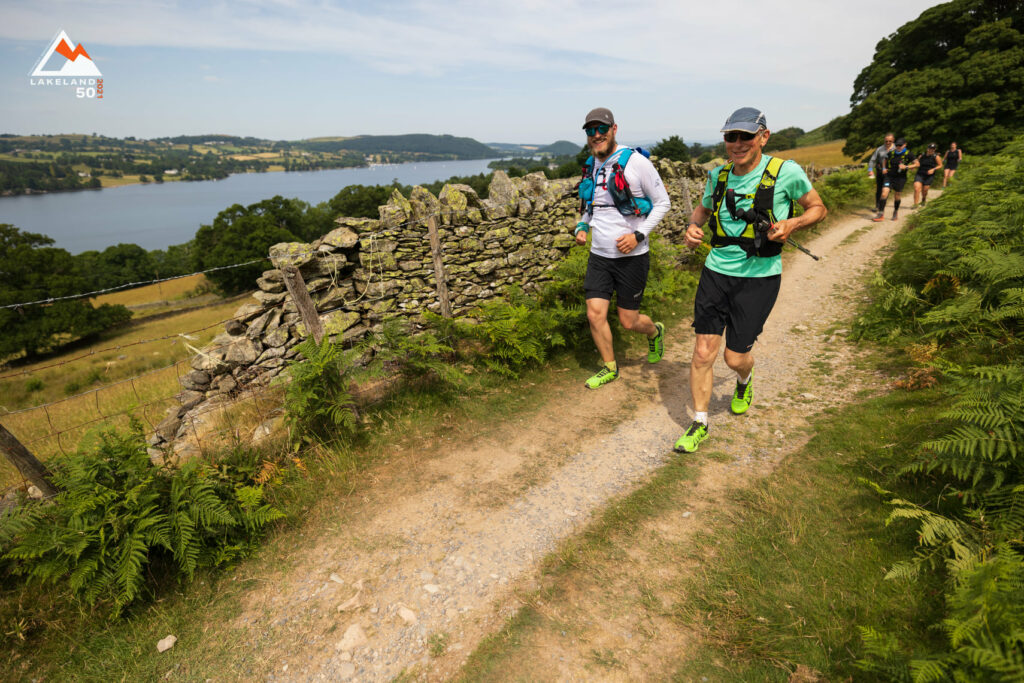(@45670!)

Before: at registration 
After: the finish at 4am
A confluence of events into the post-lockdown period of 2021 meant that coherent training for the epic Lakeland 50 race just was not possible. At this point my longest race was 10 miles, and I had no way of knowing how I would find this 50 miles ultra. 3000m of ascent made it doubly daunting.
I was cheered somewhat to see there were 19 other entrants in the V70 category. I was not alone in my folly!
Walking across Scotland in June probably helped me; maybe even more that a program of running. A 4 week gap in between the TGO challenge and LL50 seems like ‘taper’ time in the Noddy books about training. I took it easy during this period. A couple of short runs to confirm I could move in that mode, and one 45km walk to let my body know about duration.
The long walk gave me a lesson in hydration – plain water did not seem enough, it just passed through my body. After a trial I used electrolyte tablets in much of my water for the actual event.

The Lakeland 100 & 50 seems highly regarded for the support given. In terms of difficulty I have seen the 50 rated as level 2 out of 5, so quite tough for a first timer but not too much so for the experienced ultra runner. I can imagine a lot depends on the weather.
This year we had near ideal conditions. The hot weather of late July became a few degrees cooler on the Saturday morning, too late unfortunately for the starters in the 100 race which began at 6 pm on the Friday evening. The sun was behind cloud for much of the day with a light intermittent breeze. I can imagine previous occasions with high winds and rain and hail were a lot tougher.
While the 100 is a circular route from Coniston, the 50 picks up half way round at Dalemain estate near Pooley Bridge just south of Penrith. Runners are ferried to Dalemain on many busses that leave Coniston at 8:30am. This was the first time I had mixed with so many people since before the start of Covid. We were all masked for the briefing in the school hall and for the journey to the start.

From a show of hands it looked like half the entrants had done the 50 before and half were first timers. There are 6 intermediate checkpoints on the 50 route. All provide food and drink. Some old timers had their favourites based on the food served; for me the food was quite unimportant. I enjoyed a couple of cups of tea, and also a double serving of a fruit smoothy at the half-way mark otherwise a couple of white bread sandwiches was the most I wanted.
There’s a bit of chit-chat. Time and miles pass quicker when chatting away to someone who is travelling the same pace. With so many starters it is rare for there not to be someone in front to lead the way. A couple of times I saw people in front take a wrong turn. The map provided is an enormous sheet, not very cleverly folded I was happy not to use this. For the recce’s I used my own A4 sheets printed from OS maps and folded neatly in case I needed to run with it is my hand. The run book has good detail and is easy to handle but I found I did not need to refer to it.

With around 1500 people on the course, serious runners will feel the congestion in places where the track is narrow. But maybe this is a different sort of race, where the atmosphere and camaraderie are the main reasons for taking part.
Arriving at the finish in the middle of the night with no-one visible in front or behind was quite bit disorienting. All the more so as groups of people talk loudly in the arrivals tent swigging pints of beer as if it is early evening and not 4am. But I felt fine in many ways and I did not want to spoil that by eating the promised meal of chilli and beans.
It was not until a few days later that I found that I had finished in the middle of the field – no 583 out of 1134 starters. In the V70 group I was pleased to see I had come second, but rather shocked to see how far ahead the leader was.